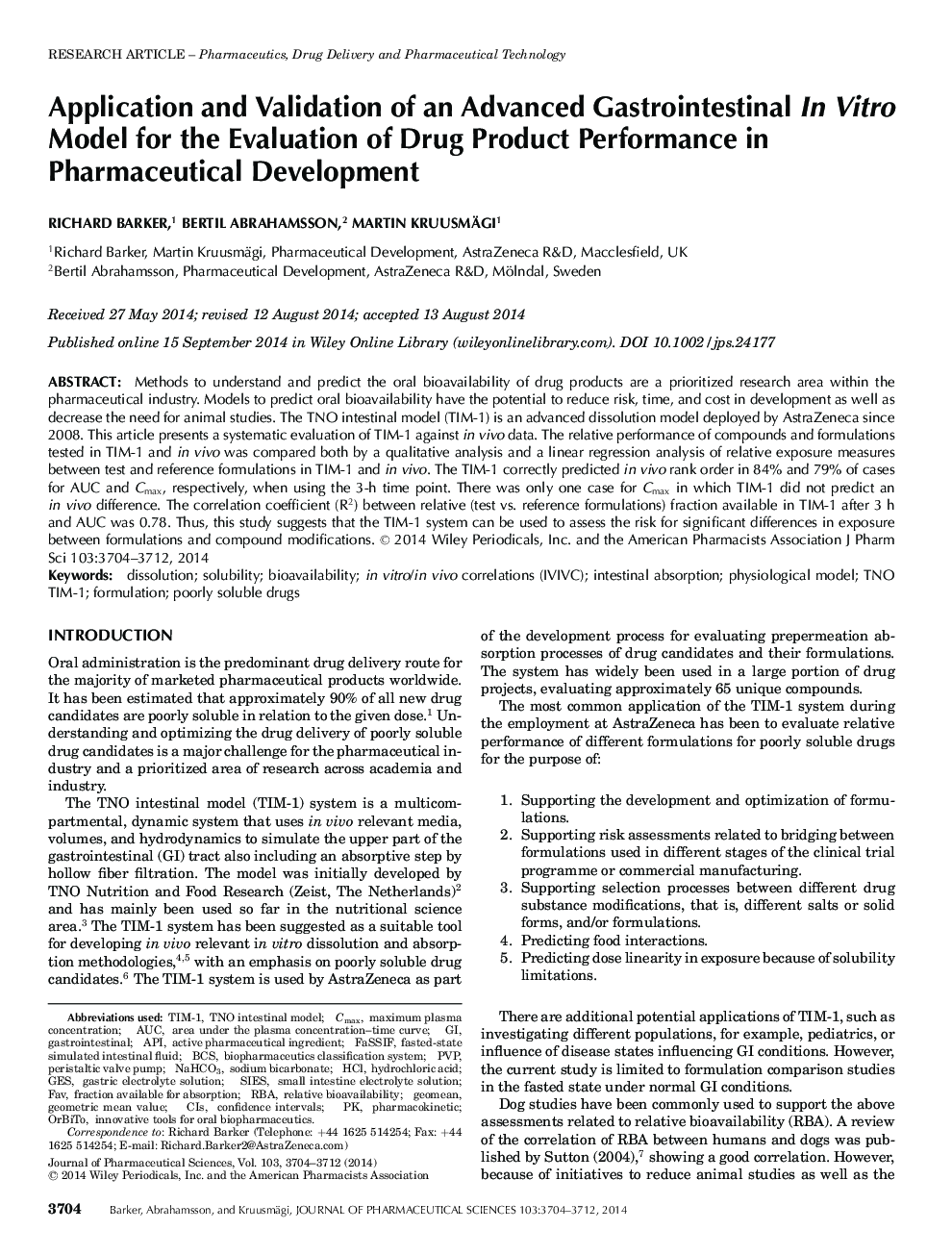| Article ID | Journal | Published Year | Pages | File Type |
|---|---|---|---|---|
| 10162282 | Journal of Pharmaceutical Sciences | 2014 | 9 Pages |
Abstract
Methods to understand and predict the oral bioavailability of drug products are a prioritized research area within the pharmaceutical industry. Models to predict oral bioavailability have the potential to reduce risk, time, and cost in development as well as decrease the need for animal studies. The TNO intestinal model (TIMâ1) is an advanced dissolution model deployed by AstraZeneca since 2008. This article presents a systematic evaluation of TIMâ1 against in vivo data. The relative performance of compounds and formulations tested in TIMâ1 and in vivo was compared both by a qualitative analysis and a linear regression analysis of relative exposure measures between test and reference formulations in TIMâ1 and in vivo. The TIMâ1 correctly predicted in vivo rank order in 84% and 79% of cases for AUC and Cmax, respectively, when using the 3âh time point. There was only one case for Cmax in which TIMâ1 did not predict an in vivo difference. The correlation coefficient (R2) between relative (test vs. reference formulations) fraction available in TIMâ1 after 3 h and AUC was 0.78. Thus, this study suggests that the TIMâ1 system can be used to assess the risk for significant differences in exposure between formulations and compound modifications. © 2014 Wiley Periodicals, Inc. and the American Pharmacists Association J Pharm Sci 103:3704-3712, 2014
Keywords
Related Topics
Health Sciences
Pharmacology, Toxicology and Pharmaceutical Science
Drug Discovery
Authors
Richard Barker, Bertil Abrahamsson, Martin Kruusmägi,
